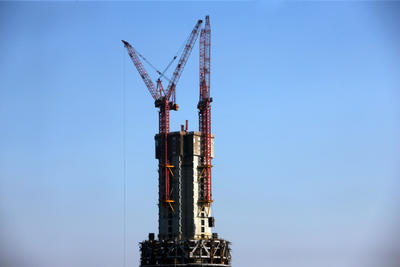This so-called ‘policy paralysis’ does appear odd given the Chinese government’s emphasis of GDP growth in the past. Some market participants argue that the policy makers are ‘way behind the curve’ because of the once-a-decade leadership transition.
It is unlikely the Chinese government is simply ignoring the growth risks. A more plausible explanation is the underlying view among officials that the current growth downturn is as much structural in nature as cyclical. According to our estimation, the economy’s potential growth rate has already moderated, from 10 per cent in 2000–10 to an estimated 8 per cent over 2010–20, and will slow further to 6 per cent over 2020–30. If these figures are roughly correct, then the 7–8 per cent range may have become the ‘new normal’ of Chinese growth. In any case, the government has already revised down its GDP growth target to 7.5 per cent in 2012, from 8 per cent in previous years, and may further take it down to 7 per cent in 2013.
The seeming reluctance of policy makers to adopt aggressive policy responses this time round is, at least in part, due to lessons learned from the 2008 stimulus package. For the past several years, the government’s massive investment programs have been criticised for increasing financial and fiscal risks. Many government officials speak regularly about the need to tolerate slow growth in order to improve growth sustainability. They emphasise the policy objective of stabilising, rather than boosting, growth in the face of increasing downside risks to the economy.
Indeed, the current economic downturn is different from that in previous cycles. When Chinese growth decelerated rapidly during the Asian and global financial crises, for instance, the economy lost large numbers of jobs and inflation quickly turned into deflation. This time round, the economy has continued to create 8.2 million new jobs during the first seven months of this year, equivalent to 80 per cent of the government’s annual target. CPI inflation has also picked up from July and August.
The downward shift in potential growth is probably caused by two interrelated factors: a gradual maturing of the economy and rapid loss of low-wage cost advantages. The success of Chinese growth during the past decades can be attributed to market-oriented reforms, low-wage cost advantages and careful government interventions. But now production costs are rising very rapidly, partly due to labour shortage problems and partly as a result of reforms removing price distortions for energy and capital. During the first half of the year, for instance, despite the deceleration of growth, minimum wages still increased by 15–20 per cent in most cities.
Meanwhile, China just reached high middle-income level, with GDP per capita of US$5,400 in 2011. It faces the tough challenge of the ‘middle-income trap’. A fundamental question is whether China can pass through middle-income to become a rich country. More specifically, the economy has to graduate from simple manufacturing production relying on the mobilisation of labour to industrial upgrading through high rates of human capital formation and research and innovation. It is natural that an economy’s growth rate declines as it moves closer to the world technological frontier.
The era of 10 per cent annual growth performance is probably over. And the world may have to adapt to China’s ‘new normal’ growth, which will likely sit around 7–8 per cent. Importantly, accompanying the transition from economic ‘miracle’ to ‘normal development’ are a number of important changes, including higher inflation pressures, a more balanced economic structure, accelerated industrial upgrading and more dramatic economic cycles, in addition to slower growth.
Recently, various local governments announced a large number of ambitious investment programs totalling more than 17 trillion yuan (US$2.7 trillion). These programs will unlikely lead to a significant rebound of fixed asset investment, as most of the projects are scheduled for the next three to eight years and often they are not backed by detailed funding plans. As Chinese local government just completed its power transition, the new leaders want to position themselves in case the central government rolls out aggressive investment programs. But so far, the central bank, the banking regulator and the Ministry of Finance have all maintained a relatively cautious macro and regulatory policy stance.
The rationale of the cautious macroeconomic policy strategy is, arguably, to let growth settle around its new potential. Policy makers watch indicators on unemployment and inflation very closely. If unemployment becomes a serious issue, the economy is probably growing at a below-potential pace. And if the inflation rate is very high, then the economy is likely to be expanding at an above-potential pace. Either problem could trigger serious economic and political instability and is likely to invite more aggressive policy responses from the government. But at this point a more aggressive policy strategy does not appear to be in the offing.
Yiping Huang is Professor of Economics at Peking University and at the China Economy Program, the Australian National University. He is also Chief Economist for Asia at Barclay’s Bank, Hong Kong. He is EAF Distinguished Fellow for 2012.

